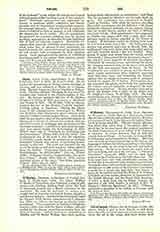

O’Hurley, DERMOD, Archbishop of Cashel, Ireland, d. 19-June 29, 1584. His father, William O’Hurley of Lickadoon, near Limerick, a man of substance and standing, holding land under the Earl of Desmond, secured him a liberal education on the continent. He took his doctorate in utroque jure, taught first at Louvain and then at Reims, and afterwards went to Rome. Appointed Archbishop of Cashel by Gregory XIII, he was consecrated on September 11, 1581, per saltum, not having previously taken priesthood. Two years later he landed at Drogheda, stayed a short time with the Baron of Slane, and proceeded for his diocese, expecting protection from the Earl of Ormonde. Loftus, Protestant Archbishop of Dublin, and Sir Henry Wallop, then lords justices, having secret information, so intimidated Lord Slane that he hastened to Munster and brought back his guest. The archbishop was committed to Dublin Castle in October, 1583, while the justices, dreading Ormonde’s resentment and his influence with Queen Elizabeth, obtained authority to use torture, hoping that he would inform against the Earl of Kildare and Lord Delvin. Still apprehensive, they suggested as Dublin was unprovided with a rack, that their prisoner could be better schooled in the Tower of London. Walsingham replied by bidding them toast his feet in hot boots over a fire. The barbarous suggestion was adopted, and early in March, 1584, the archbishop’s legs were thrust into boots filled with oil and salt, beneath which a fire was kindled. Some groans of agony were wrung from the victim, and he cried aloud, “Jesus, son of David, have mercy on me!”, but rejected every proposal to abandon his religion. Ultimately he swooned away, and fearing his death, the torturers removed him; as the boots were pulled off, the flesh was stripped from his bones. In this condition he was returned to prison, and the Justices again sought instructions from England, reporting what had been done, and intimating the lawyer’s opinion that no charge of treason could be sustained in Irish law against Dr. O’Hurley. Walsingham, having consulted the queen, wrote back her approval of the torture, and her authority to dispatch the archbishop by martial law. He was secretly taken out at dawn, and hanged with a withe on the gibbet near St. Stephen’s Green, 19-June 29, 1584. His body was buried by some friends in St. Kevin’s churchyard.
CHARLES MCNEILL

